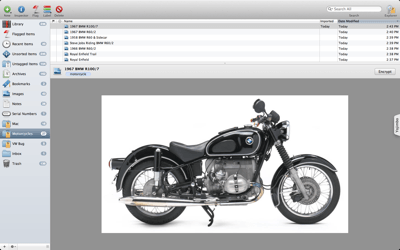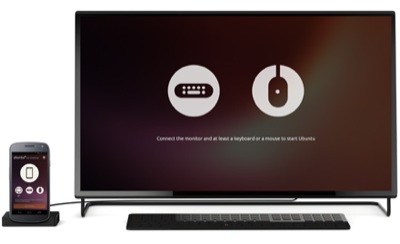My Mac is a finely tuned machine. I have been using a Mac for Unix systems administration work since 2006, starting with a PowerMac G4, and have developed a smooth and efficient workflow. Most of the important tools are open source, and the ones that are not are very high quality.
Hardware
One of the reasons I like buying Apple hardware is that it lasts. I run a four year old MacBook Pro, and so far have no reason to upgrade to a newer machine. I will probably upgrade to a solid-state drive sometime in the next few months, and expect to keep this Mac another two years. Last year I upgraded the RAM to 8GB, and that seems to work fine for me.

The Mac spends most of its day in a Twelve South BookArc in the corner of my desk. I’m obsessive about cables, so I have the Ethernet, power, time machine drive, headphones, and external monitor neatly Velcro’d under my desk and out of sight. I have tacks holding sections of Velcro under my desk to route the cables where they need to go. Work provides a 22-inch Acer display, which is not great, but acceptable for what I need to do. I would love a higher density display for text clarity, but I’ll take what I can get.
I use the Apple aluminum bluetooth keyboard. I love it because it is small, has only the keys that I use, and is easy and fast to type on. I mostly agree with the reasons David Sparks mentions in his keyboard review, but I haven’t bothered to look into the noisy mechanical keyboards. Mostly because I work in an office environment, and the noise would bother my coworkers. I also use an Apple Magic Mouse my wife gave me for my birthday a couple years ago. The ergonomics of the mouse are not great, but since my hand is not on the mouse all day, that doesn’t bother me. What I do love about it is being able to flick back and forth between full-screen applications, browse through Safari history, and double-two-finger-tap to bring up Mission Control.
Other than my iPhone, the only other hardware I use is a Western Digital drive I keep under my desk, secured with a lock, cables neatly wrapped in Velcro, as my Time Machine drive.
Software
The first and most important piece of software I install is Quicksilver. Without Quicksilver, my machine is crippled. I map Quicksilver to ⌘Space, so the first preference I change is to disable both the “Show Spotlight search field” and “Show Spotlight window”. I use Spotlight frequently, but when I need it I use the mouse and click on the menu bar icon. I install a few plugins for Quicksilver, but the most important are the Remote Hosts Plugin, the User Interface Plugin, the Web Search Plugin, and the Clipboard Plugin.
After Quicksilver is installed I feel at home, and I can start using the computer. Behind Quicksilver, the most used app on my Mac is the Terminal. I used iTerm 2 in the past, but Apple has continued to improve the built in Terminal app and I don’t feel like I need it anymore, or at least don’t see what value iTerm provides that Terminal does not. I use Anonymous Pro, 14 point, and make my default window size 80 columns x 40 rows. Next, I install Homebrew, and from Homebrew install zsh, and then oh-my-zsh.

I was sold on zsh when I accidentally discovered that it would do tab auto-complete for directories on a different server over an ssh connection. I think I was typing something like:
scp server.whatever:/~/somedir/
I hit tab out of habit, and it autocompleted the rest of the scp command. I sat there and thought about it for a few minutes, and realized that it must have known that I was typing an scp command, parsed the remainder of the command to get the server, checked for ssh auto-login with keys, and then parsed out the files available for autocomplete. There is also great stuff like batch file renaming with zmv, and glob autocomplete for things like cd. Here’s another example, say I want to cd into a directory named “something-awesome”, I can type “cd awesom” and tab, and zsh will recognized I want to get into the “something-awesome” directory.
Speaking of SSH, the next thing to take care of is SSH keys. I always use SSH keys to log into servers without a password, and I recently generated a new SSH key pair. To do so, open up the Terminal and run ssh-keygen -t rsa and enter a password that is reasonably complex, but one that you can remember. The first time you use that key, OS X will prompt you to save your password in the system keychain, which I do. If my computer is compromised, whoever has it will have access to the unlocked key, but without being on our local company network it is of little use. The password keeps the key from being used if it is removed from my machine, so I feel it is a good compromise between usability and security. My public key is given to Puppet, and from there is added to my local user account on all the servers I manage.
Next I create a ~/Unix directory, and then ~/Unix/bin and ~/Unix/etc. Inside of ~/Unix/etc I put a plain text “servers” file that lists one server per line for each server that I manage. This list is important because I base a lot of my other scripts off of that list. It is the source of truth that I measure Nagios, Puppet, and any other tools we use that need to touch each server.
The first use of the servers list is a quick loop to populate my ~/.ssh/known_hosts file.
for each in `cat ~/Unix/etc/servers`; do
ssh -oStrictHostKeyChecking=no $each hostname
done
Assuming Puppet has done its job and distributed the SSH key, this loop will touch each server in the list, add the key to the known_hosts file, and return the output of the “hostname” command to the terminal, along with a warning that it is doing so. Once the loop is finished, it’s time for Quicksilver to work its magic. In the Quicksilver preferences, under the Catalog tab, and the Plugins option in the left-hand panel (whew), there should be a source option for “Remote Hosts”. Clicking on the triangle will reveal the available sources, one of which will be our known_hosts file. Make sure that is selected and click the circular arrow button in the bottom right corner to rescan, and a number should appear.
This is how I manage getting to any server at a moments notice. I bring up Quicksilver, start typing the name of the server, and when I see the full name of the machine I hit return. Quicksilver launches Terminal with a SSH session open, and since I already have my key traded out, I’m logged right in.
There are times when Quicksilver isn’t quite quick enough. When I need to make the exact same change to a group of servers, I use another tool installed through Homebrew: csshX. The csshX tool is a Cluster SSH implementation for OS X, and can drastically speed up common tasks. For example, when migrating from one NFS server to another, the NFS mounts are the same for every server, and each needs to be unmounted and remounted again. This would be a good job for Puppet, but for various reasons can not be. The csshX tool lets me open up several windows at once and type the same commands in each of them. It has saved me hours of repetitive, dull work.
Managing windows is not something I care to do, so I let Moom from Many Tricks do it for me. I have ⌘⎇1 mapped to move the current window to take up the left half of the screen, and ⌘⎇2 mapped for the right. I use this combination daily to split my screen between something I need to read and something I need to type.
I use Safari as my main browser, but there are a few internal tools that do not work correctly, like HP’s “Onboard Administrator” and a couple of other tools that need Flash, like the web interface for VMware. So, in addition to Safari I also keep Firefox and Google Chrome handy. I don’t bother doing any customization in either of the auxiliary browsers. I’m normally in and out of them quickly, and use them just long enough to accomplish the task at hand. For Safari, I use a handful of plugins which hint a bit more about my workflow:
I set my homepage to DuckDuckGo, and set both new windows and new tabs to open with Top Sites. I also switch my preferred search engine to Yahoo and edit my /etc/hosts file to add this line:
184.72.115.86 search.yahoo.com
When I open a new window or tab in Safari the Top Sites feature lets me choose to click on Nagios, Puppet, or our internal wiki, or just start typing to do a DuckDuckGo search. If I do a search, DuckDuckGo includes javascript that lets me use vi keybindings to navigate the search results. DuckDuckGo also includes a “bang” syntax that lets me search other sources, like man pages.
Once on a new page, the Type-To-Navigate plugin lets me type in the name of a link to highlight it, and I can press return to open it, or ⌘return to open it in the background. This lets me quickly search for and browse documentation outside of our local wiki.
When I find relevant, detailed documentation, I clip it into my technical database held in DEVONthink Pro. I quickly became frustrated with DEVONthink in the past when I misunderstood how it was meant to be used. DEVONthink is not an anything bucket, it is a specialized research tool meant to provide insight into your data. Once I read about how historians use DEVONthink the pieces began to click for me. I now drop all my technical documentation into DEVONthink, organized into a hierarchy similar to scientific classifications of species. CentOS is of the class Linux, which is of the class Unix, which is part of the class of Operating Systems, which falls under the top level class of Software. Also kept in DEVONthink is what software is installed on what server, and what hardware is associated with each server. This way I keep a deep, running database of the systems I’m responsible for, and synchronize the data to my phone for reference when I’m in the datacenter. DEVONthink keeps documentation that far exceeds the level of detail in our wiki.
Part of the documentation we keep are high-level network diagrams, organized by system. I draw the diagrams in OmniGraffle, which I recently upgraded from version 4, originally purchased so long ago I forgot exactly when. OmniGraffle keeps getting better, and like the Mac, has a long shelf life. I export completed diagrams to PDF for inclusion in the documentation.
Finally, tasks and projects are handled in OmniFocus. Each system becomes a project, and each project has a list of tasks associated. A new recurring task for each project is to review and update the documentation semi-annually. In reality, the documentation is constantly in flux, but it is good to have a reminder to do an overall review to make sure we are where we need to be.
Over time my workflow has grown, and then condensed again, and finally settled into a workable, reproducible, long-term system. When I get into the groove, listening to old Grateful Dead bootlegs or Bob Marley in iTunes, I don’t even notice the tools anymore. My system fades into the background, and all that is left is the thoughtful bliss of real productivity.
 When I bought my first iPhone, I found that I wanted to be able to collect things on the go as well as on the web. Pictures of artwork at a store, or a quick note about a blender. Without a proper Yojimbo client for iOS, most of that stuff was lost. I tried to use Evernote or DEVONthink To Go, but neither tool really clicked with me.
When I bought my first iPhone, I found that I wanted to be able to collect things on the go as well as on the web. Pictures of artwork at a store, or a quick note about a blender. Without a proper Yojimbo client for iOS, most of that stuff was lost. I tried to use Evernote or DEVONthink To Go, but neither tool really clicked with me.


